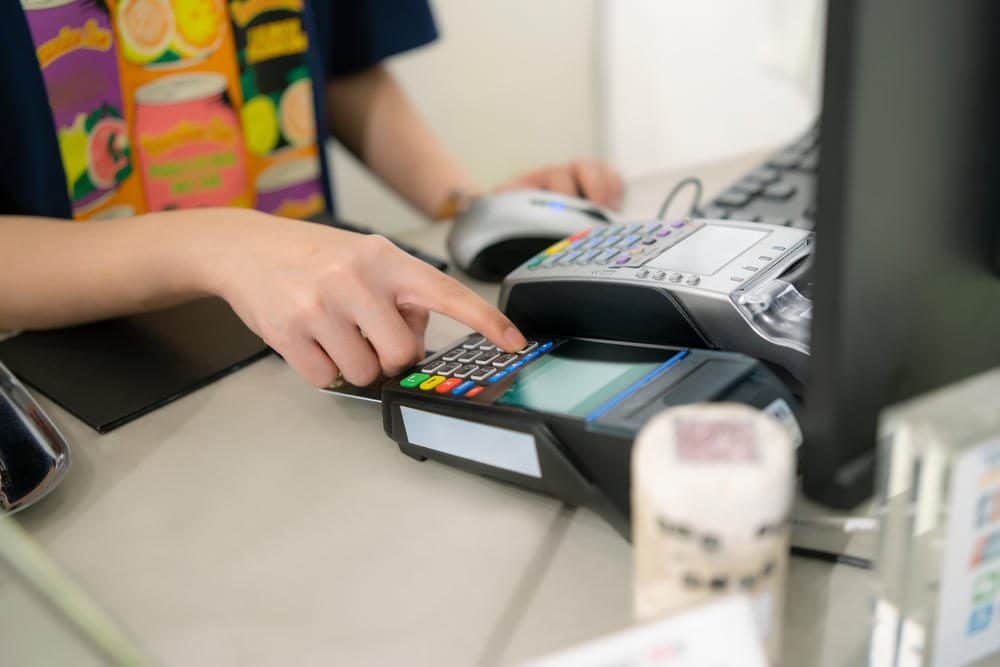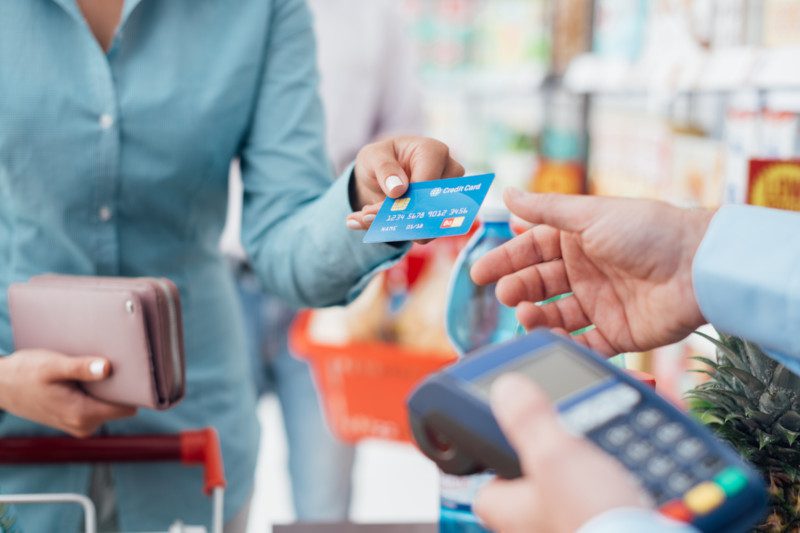Consumers all around the globe are turning to credit cards over other forms of payment. People find credit cards convenient as they can dispute charges and are offered perks from companies. Over 183 million Americans have at least one credit card. Cash is no longer king.
Businesses must accept credit card payments to stay competitive by having:
- The hardware and software to process the transactions
- A user-friendly interface for consumers when they pay with credit cards
- An understanding of how to integrate credit card payments into your business process
- Security measures to protect you and your consumers from fraud and identity theft
Accepting credit card payments can seem like a hurdle, especially for anyone just starting or scaling up their business. However, the benefits of credit card transactions are considerable, and for most business owners, they far outweigh the costs.
The Benefits of Accepting Credit Card Payments
By accepting credit card payments, you make your business available to millions of consumers who do not rely on cash or checks for their daily purchases.
You do not run the risk of turning off a potential consumer who took the time to browse your shop and find things to buy, only to figure out that they cannot use their credit card and must go home empty-handed.
Consumers choose the credit cards they use because of the benefits they offer. By letting the consumer use credit cards, you gain those benefits second-hand.
Customers develop brand loyalty to credit card companies just as they do to other businesses. Accepting credit card payments allows you to profit from these loyalties.
For example, some banks and credit card companies offer cash rewards to new cardholders that make a certain number of purchases with their card within a certain number of days. These customers will be eager to buy something if the seller accepts their new card.
By accepting credit cards, you provide yourself with an intermediary if there is a dispute over a purchase. Often, customers feel angry and frustrated if there is a problem with a transaction or if they are returning a product.
With a cash sale, you must resolve the dispute directly with the customer. With a credit card purchase, you can refer to the paper trail with the credit card company and work with them to resolve the issue.
Lastly, accepting credit card payments puts your business in a better position to adapt to changes due to COVID-19 or any future pandemic.
The social changes since 2020 have prompted an increase in online shopping, delivery, and contactless services. Relatively few online delivery services offer cash on delivery purchasing,
Costs of Accepting Credit Card Payments
To accept credit card payments safely, your business needs infrastructure that is not required for cash purchases.
A means of accepting the card number and card information itself is needed, whether on the phone, in person, or online. If you need to take a physical card, you need card readers compatible with the major credit cards.
Process credit card transactions using the card number, expiration date, Card Verification Code (CVC), and ZIP code for phone or online purchases. In some cases, needing the ZIP code can prevent customers from using cards not associated with a US ZIP code.
Employees need to be trained on how to accept credit card payments. All payments should comply with the safety and identity protection steps in the transaction policy of the company.
If there is a dispute over credit card purchases, your employees should know how to reassure customers and walk them through the resolution process.
In addition to setup and operating costs, consider credit card processing fees. These fees can include a monthly fee for subscribing to their service and a transaction fee for each credit card payment. There may also be fees for the payment gateway and the hardware for accepting credit card payments.
You can choose to pass the fees on to your customers directly and offer a cash discount. Alternatively, you can budget for credit card processing fees as a cost of business and raise prices more generally to cover that cost.
The Technology for Accepting Credit Card Payments

Whether merchants accept credit card payments online or at a brick-and-mortar store, it is vital to understand the software and hardware that allows them to.
The following terms describe the critical technology and technological tools that connect your customers to the electronic infrastructure that allows them to make purchases securely.
Point-of-Sale System
The point-of-sale system refers to the hardware and software present in a brick-and-mortar store. This includes the physical card reader, software, and peripheral equipment such as the interface for collecting signatures, the cash register, and the check reader.
Card Reader
Most point-of-sale systems include a card reader. If yours does not include one, you might have to purchase your own. There are three types of card readers: stripe, chip, and smartphone. Some readers perform more than one function.
If you use one reader for chip cards and one for phone payment, be sure that they both work well with the point-of-sale system.
Payment Gateway
The patient gateway is the interface that gathers information from the customer in point-of-sale and online contexts. This can refer to the software that the customer interacts with within the point-of-sale system as well as the interfaces that accept credit card payments from online shoppers.
The payment gateway carries out many vital functions such as:
- Providing instructions to the consumer about how and when to insert cards or enter credit card information
- Letting customers know when there is a problem with a transaction or a declined card
- Collecting signatures when required
- Allowing the customer to request cashback in point-of-sale systems
- Allowing the customer to save card information for future use in online systems
- Allowing the customer to select from receipt options at the end of the transaction
Tokenization
Tokenization is a security technique where a unique token refers to a card number rather than using the number itself. Using tokens prevents thieves from stealing credit card information if they intercept data.
Types of Credit Card Payments
When setting up your credit card processing system, it is important to know which types of credit card payments you expect to receive now and in the future.
In-Person Credit Card Payments
Since your employees will be interacting directly with customers, they should know how to use the point-of-sale software and hardware.
Online Credit Card Payments
Having a website that that accepts online payments is essential for internet retailers. Accepting online payments is simple in one sense because you take credit card information without directly interacting with the customer. However, the risk of credit card fraud is higher because a stolen credit card contains most of the information a thief would need to make purchases online.
Convenience, security, and reliability are paramount when setting up an online storefront with a checkout process.
The Process of Accepting Credit Card Payments
When a customer attempts to pay with a credit card number, the point-of-sale system stores the information and sends it to the credit card company.
The charge hits the cardholder’s account, and the merchant receives the transferred money when you set up the system if the information is valid and the credit card company authorizes the sale.
Some additional points to consider:
If your business is small, you can simplify and expedite the process by using a payment service provider. (See the next section)
The point-of-sale system can ask for a pre-authorization on the customer’s card to verify that funds will be available. This process can be helpful for circumstances where the precise value of the charge is not known, such as hotel stays that might involve incidental charges.
If you use a card reader for the process, it will have to be compatible with the credit card processing system.
Using Payment Service Providers
Instead of setting up a checkout system where the credit card company transfers money directly into your business account, you can save time and set up costs if you use a payment service provider such as PayPal or Apple Pay.
If you use a payment service provider, they interact directly with the credit card company. You can then transfer money into your business account.
Payment Service Providers reserve the right to suspend service if they believe that fund transfers violate their terms of service and might not allow transfers with a higher risk of fraud, sale of stolen property, or are regulated products such as firearms. This could limit your business operations if you use a payment service provider.
If certain transactions in your business raise red flags with payment service providers, use PSPs for ordinary transactions and conduct other business on a cash basis or using a merchant account.
Some payment service providers might not be compatible with all point-of-sale systems and card readers. Confirm compatibility before purchasing credit card processing systems or signing up for services.
Preventing Credit Card Fraud and Scams
Identity theft is a growing phenomenon that affects thousands of Americans every year. As a merchant, you take responsibility for detecting fraudulent credit cards that customers use when they buy from you.
Knowing how to accept credit card payments securely and safely will protect you from loss due to credit card fraud and provide your customers with peace of mind. Here are some tips:
- Use chip readers rather than magnetic stripe readers for better credit card security.
- Check the customer’s address and/or ZIP code to prevent fraudulent use of a lost or stolen card.
- Beware of credit card “skimmers” that thieves use to steal credit card information from consumers. Check your card readers regularly.
- Know the procedure for reporting fraudulent transactions to credit card companies and law enforcement.
- Be sure that your software is up to date and that you have antivirus and anti-malware software running on the computer system that processes credit card payments.
- Do not keep customer credit card information on your computer system so that you will not be liable for damages if someone hacks your computer system.
- Be aware that your business will be responsible for chargebacks (disputed charges) because of fraudulent charges.
Troubleshooting Tips for Credit Card Payments
Processing credit card transactions is usually a smooth, convenient process. However, problems can sometimes arise. Customers will not remain loyal if they repeatedly deal with a glitchy online checkout process or point-of-sale systems that crash. These tips will help you keep your system up and running:
- Prompt the customer to remove and re-enter the card if an error occurs during a transaction.
- Keep the card readers clean and in good repair.
- If you change software or hardware, try it out thoroughly to ensure that it works well and that your employees know how to use it properly.
- Keep the software up to date for the payment gateway.
- Before selecting a payment gateway system, be sure that technical support is available to resolve issues quickly.

